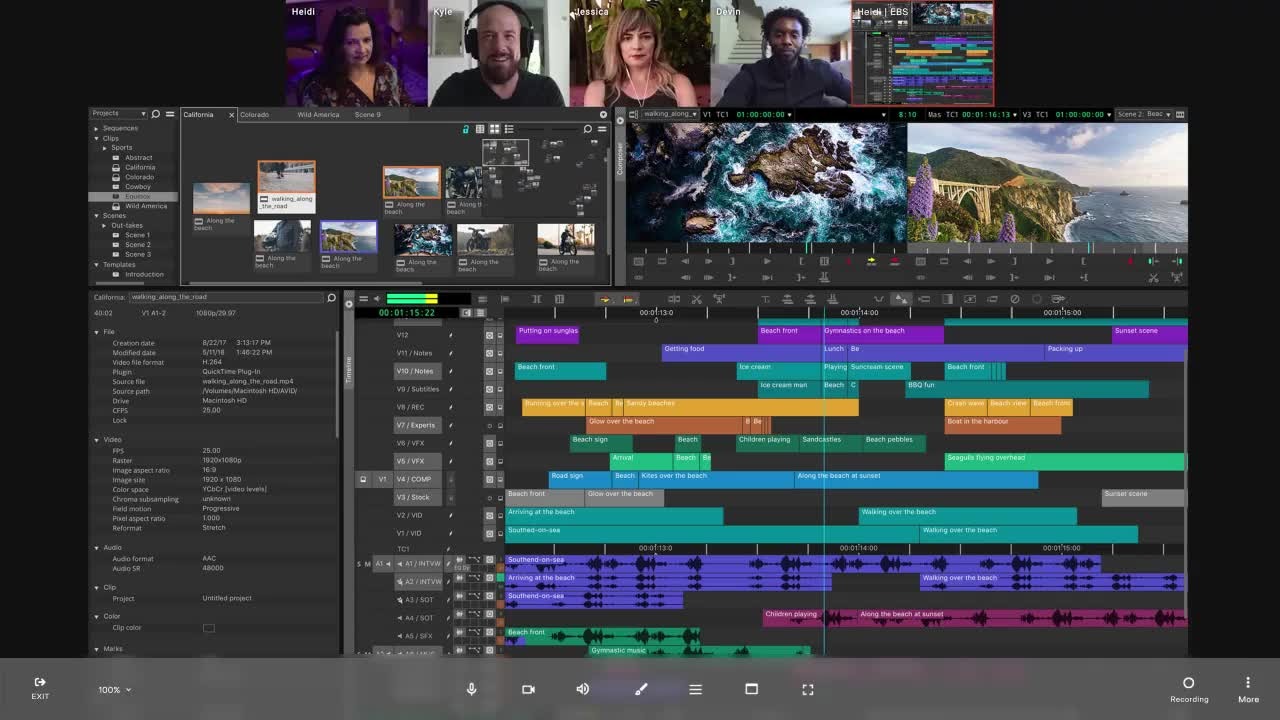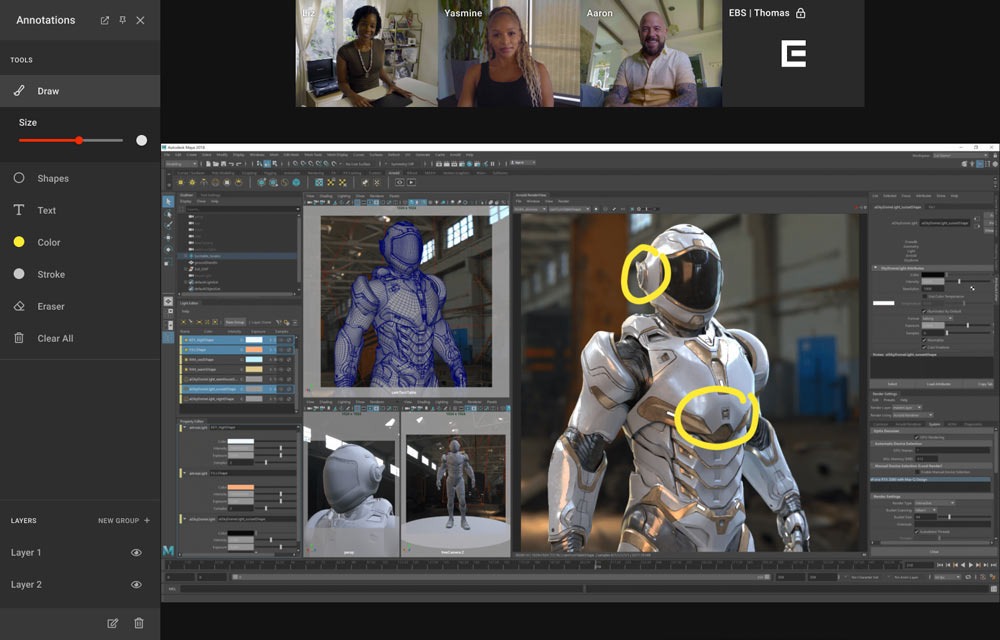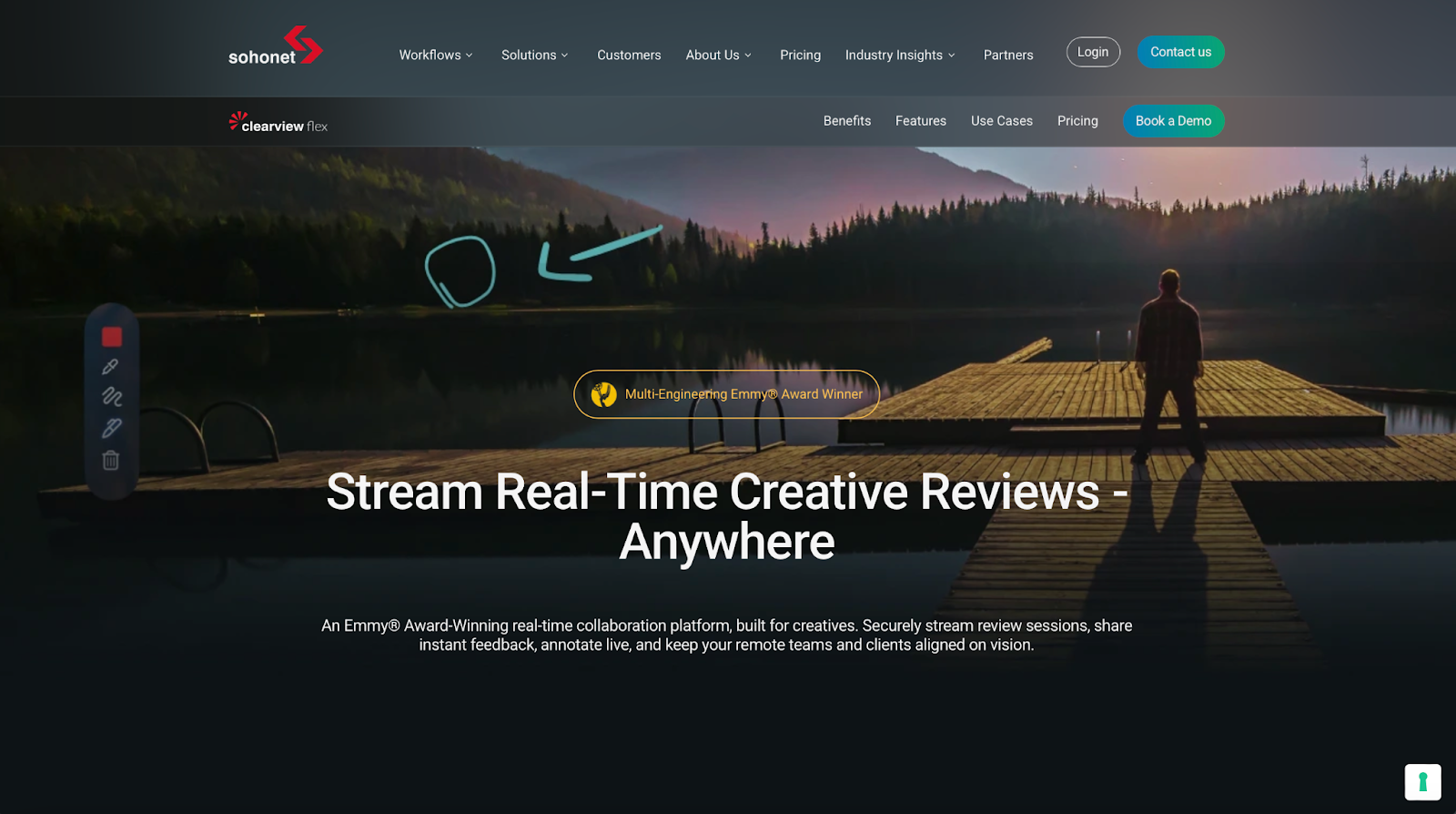Color science. VFX and compositing. Mixing and balancing 7.1 surround sound. No matter your role in post production, you know these are some of the most technical and complex stages of the post process. But if you’ve been in the industry long enough, you also know the hardest part isn’t on that list: getting clients and stakeholders on the same page.
Collaborating and collecting feedback can be a challenge in itself. Giving clients a seamless, intuitive way to view and comment on your work without endless troubleshooting or setup is another entirely.
If online forums and message boards are any indication, many editors and post pros are searching for a simple way to stream their edits so clients can just log in and watch. No crash courses in NDI, OBS, or Zoom required.
To make that search easier, we’ve assembled a guide comparing the top turnkey post-production streaming solutions on the market. These are the platforms you’re most likely to encounter as you research your options, complete with a breakdown of their key features, pros, cons, and pricing.
We’ll start the list with our own solution: Evercast.
1. Evercast
Evercast is built for post-production teams that need real-time, high-fidelity collaboration – not just a video-conferencing workaround. It has built-in video chat and also delivers frame-accurate playback up to 4K at 60fps with surround sound capability and 10-bit 4:4:4 color, so editors, colorists, mixers, and more can stream their sessions to stakeholders with studio-level quality and minimal setup.

Integrated with tools like Premiere Pro, DaVinci Resolve, and Frame.io, Evercast combines live streaming, video conferencing, chat, and annotation in one effortless, secure workspace. It’s designed to simplify review and approval for creative teams, keeping everyone aligned without compromising visual fidelity or workflow efficiency.
Key streaming features
What real customers are saying about Evercast
“Running a mix over the Evercast stream is almost exactly like running one in person. … All of a sudden instead of sending rounds of Quicktimes back to clients and awaiting written notes that are often challenging to interpret, we can hop on a session for 30 minutes and make adjustments on the fly.”
-Jacqueline Bošnjak, Founder of Mach1
“Evercast was just an invaluable tool for immediate feedback. There aren’t many tools that we have at our disposal that can do something like this, with all of the features that it has, and the ability to literally hit a button and you’re there, as long as you have a decent internet connection.”
-Matt Sweat, assistant editor, F1
“Zoom can do a lot of things, but it just cannot cut it when it comes to streaming directly from your Avid. it's just not going to have the same fidelity of picture or sound. So we all would hop on Evercast, and that was really efficient for us, because we could do combo sound/music spots to make the best use of everybody's time. Evercast always worked for us, and it was dependable. While sometimes the show was difficult, at least the platform we were working on didn't give us technical issues on top of that.”
-Geneva Willis, post supervisor, Murdaugh: Death in the Family

Pricing
- Starting from $549 per month
Ready to see how seamless real-time review can be for your post-production team and your clients or stakeholders? Book a live demo here.
Create together remotely, in real time

2. Streambox

Streambox is a high-fidelity streaming and collaboration platform built for post-production and broadcast workflows that demand precision and reliability. Its hardware and software solutions support up to 4K DCI with 12-bit 4:4:4 color and HDR, allowing post professionals to stream sessions with studio-level accuracy. Streambox’s cloud-based sessions make client access simple — participants join with a link, no complex network setup required.
Key streaming features
Advantages
- Customization options: Both hardware and software are a la carte — so you can build a solution that fits your team’s budget and needs.
- Pay as you go: Purchasing hardware allows you to rent software on an “as-used” basis – allowing you to pause the subscription between projects.
Shortcomings
- Lacks built-in collaboration tools: No real-time video chat, comment threads, or frame-accurate annotation, thus requiring separate tools.
- Complexity: Platform compatibility can be limited, can require separate licenses for each device/OS in the workflow, and hardware/software/licensing options and upgrades make it an overly-complex solution to assemble.
- Technically demanding: Requires hardware - plus installation, network setup, and configuration can be more technically demanding compared to cloud-native review tools, especially for teams without dedicated IT resources.
Pricing
Given the number of software subscription, hardware, and upgrade options, pricing spans quite a range.
Hardware for the Pay-as-You-Go Ownership Program begins at around $2,950 for a Chroma X HD encoder/decoder. Software subscriptions (VM or Spectra) start at $295/mo.
3. ClearView Flex

ClearView Flex is a remote streaming platform built for professional post-production teams who need to share live, color-accurate video from an editing, grading, or mixing session with clients anywhere. It supports up to 2K DCI resolution, 10-bit 4:4:4 color, and sub-100ms latency, offering reliable real-time playback that preserves creative intent.
Its “Editorial Sessions” feature adds integrated video chat and streamlined audio routing, making it easier for small review groups to collaborate without juggling multiple tools. While it’s highly secure and well-suited to studio workflows, setup and flexibility can feel more rigid compared to newer, cloud-native options.
Key streaming features
Advantages
- Purpose-built session types: Editorial Sessions add integrated video chat and optimized audio routing, making it easier for small creative teams to collaborate within a single, secure environment.
- Trusted security and support: Used by major studios with enterprise-level encryption and 24/7 support included across all plans.
Shortcomings
- Limited scalability: While attendees can range from 20-40 depending on subscription tier, it only allows up to 6 view conference participants, which can be restrictive for larger client or team sessions.
- Rigid workflow structure: Session setup and permissions are tightly controlled, leaving less flexibility compared to fully cloud-native tools.
- No native recording: Does not include built-in session recording, requiring external capture solutions if archival or review playback is needed.
Pricing
Features and price scale based on three monthly tiers:
- Starter: $638
- Pro: $1,413
- Glow: $1,613
4. Louper

Louper is a cloud-native collaboration platform tailored for post-production teams that need real-time and asynchronous review in one place. It supports livestreaming up to 4K with frame-accurate playback, built-in video chat and annotations, integration with NLEs like Adobe Premiere Pro via native plugins, and browser-based or app-based access so clients don’t need complex setup.
The platform also includes file storage, timestamped comments, and Review Links for stakeholders to access assets at their own pace. In comparison to other solutions, however, its 8-bit color, stereo-only, and lack of reliable playback can be limiting for high-end workflows and projects.
Key streaming features
Advantages
- Affordability: Offers an affordable entry-point, allowing freelancers and small creative teams access to higher end tools without breaking the bank.
- Simple setup: As a browser-based platform, Louper only requires a simple log-in for clients and stakeholders to participate – no technical setup or hardware investment required.
Shortcomings
- Limited fidelity: Louper is limited to 8-bit color and stereo audio, so it can be quite restrictive for teams working on high-end projects.
- Less reliable: Since Louper is web-based and relies on browser and internet conditions, some users may experience more instability or higher latency than other studio-grade tools.
Pricing
Entry-level plans start at $49/mo ($33/mo when billed annually) for a “room” with up to 3 participants, while studio plans start at $109/mo ($73/mo when billed annually) and allow up to 8 participants.
5. cineSync

cineSync is a professional-grade review and approval platform designed for film, TV, and VFX teams that need precise, frame-synced playback rather than live streaming. Developed by ftrack (Backlight), it enables multiple participants to review high-res or HDR media simultaneously, drawing annotations and adding notes directly on frames while maintaining color accuracy through OCIO and SDI workflows.
It integrates with major post tools and pipeline systems, offering secure, frame-accurate collaboration. While it delivers excellent visual fidelity and reliability, cineSync lacks built-in voice or video chat and live streaming capabilities, making it less suitable for real-time client sessions.
Key streaming features
Advantages
- Secure and local-file-based architecture: Media files remain on each user’s machine rather than being streamed through third-party servers, which helps with content security for sensitive projects.
- Strong annotation tools: Users can draw directly on frames, export notes, and review in sync across participants – even when bandwidth is low – making it effective for detailed visual feedback.
Shortcomings
- Media/storage requirements: Because the files must often be downloaded or present locally, version control and turnaround can be slower compared to streaming solutions.
- More “review” than “live edit”: By design, it’s optimized for annotation and review rather than live editing, streaming, or collaborative switching of media sources on the fly.
Pricing
cineSync uses per-seat licensing. Pricing for their tool with remote review and approval starts at $39/user/month for the Essential plan and $99/user/month for users who need more functionality on the Pro plan.















.avif)









.avif)


.avif)